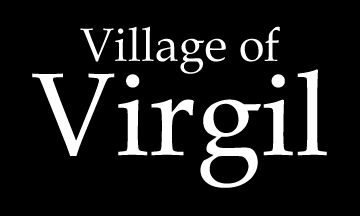Village History
During the time that the eastern part of the United States was being settled, very few pioneers had been to the area to become Illinois; instead, the Native American tribes of the Sac, the Fox, the Illinois and the Pottawottamie populated it. After the revolutionary War, the area was deemed public domain, allowing the advancement of settlement. In 1832, the native tribes banded together to fight the encroachment of the settlers upon their lands. The war, known as the Black Hawk war for its leader, ended with the forced removal of the tribes to the west of the Mississippi.
Kane County, named for Elias Kent Kane, an early settler, was established as a county on January 16, 1836, by an act of the Illinois State Legislature. Townships in the new county were drawn and, though the names of Washington and Franklin were considered, the far western township formed on June 4, 1850 was given the classical Latin name of Virgil.
Virgil Township, with its prairie lands and bogs, was the last of the areas claimed when settlers arrived in Kane County. While the eastern portion of the county drained to the fast-moving Fox River, water in Virgil Township moved in a slow, westerly current to the sluggish Kishwaukee River. The land was swampy with stagnant waters providing a breeding ground for malaria, frogs and water snakes. It provided little in the way of farmable land. In 1836, Luther Merrill from New Hampshire claimed the entire township for his own. His land monopoly held only until incoming settlers either negotiated with him for the land or simply took possession of it without a “by your leave, Merrill”. Records do not mention Merrill after the settlers claimed the land he once held.
The township’s first settlers arrived from the New York and New England states, as well as Canada; many were of Irish descent. By 1850, the southwestern corner of Virgil Township was becoming well populated; Lodi incorporated as a town in 1854, later changing its name to Maple Park. It flourished with the building of the Chicago & Galena Railroad. It became the center for the Virgil Township Government. Those not living within the Maple Park area began to refer to themselves as being from Virgil.
The route of early cattle runs to the growing Chicago area became known as the Iowa Chicago Trail (I. C. Trail). In 1886, the Minnesota and Northwestern Railroad was built; it followed the route of the original I. C. Trail. Train access furthered growth around the stop at the corner of I.C. Trail and Meredith Road, known simply as Virgil, as it allowed mail, milk, goods and passengers to be easily transported. The Virgil hamlet grew as German immigrants arrived, many coming from the same areas in Germany. A walk through the local cemetery reveals family names that continue with descendants living within Virgil. These intrepid people painstakingly built drainage ditches by hand to reclaim the swampy land. It was through their efforts that land once passed over for settlement became some of the richest farmland in the state.
As the population grew, they established a community church. The SS Peter and Paul Church was dedicated in 1879, with a school following in 1881. Initially, the parish was a joint one with Maple Park, built on land located two miles south of its present location, near the church cemetery. In 1909, SS Peter and Paul became a separate parish for the Virgil hamlet; the present building was constructed on property located closer to the train depot. The original school building was moved to this site where it served the community until the present structure was erected in 1953. The building has always been a gathering place for the residents of Virgil.
The town center served the people of Virgil with a general store and post office, an implement store, a bank, a milk factory and a granary. A public school, along with the Catholic school saw to the education of Virgil’s students. With the advent of the automobile, travel was made easier with the building of Route 64 during the 1920s, which, as the train before it, paralleled original farm roads as it traveled west from Chicago. In 1932, a gas station with a diner found a burgeoning automobile business.
Many of the local farmers wishing to retire from their farms began to build homes along Meredith Road and I. C. Trail. The Virgil View Subdivision provided land for further residential development, beginning with a lone house moved from Lees Road in the 1960s; by the late 1980s, the subdivision was mostly completed. It was populated by people no longer connected to farms, who needed to travel for jobs and services to other cities.
As times changed, Virgil saw the shuttering of its local businesses, the loss of the post office, the closing of its schools and the change of the railroad to the recreational Great Western Trail. Yet the determined citizens of Virgil worked to incorporate as a Village in 1990 after coming together to oppose the siting of a landfill within its boundaries.
The Village of Virgil has flourished with the dedication of its citizens, from its earliest settlers to its present pioneers. Different challenges wait as Virgil enters a new century and new millennium. The citizens proud to be from the area known as Virgil are meeting these challenges.








